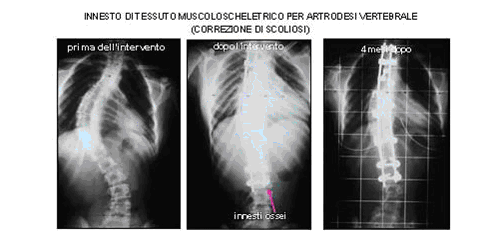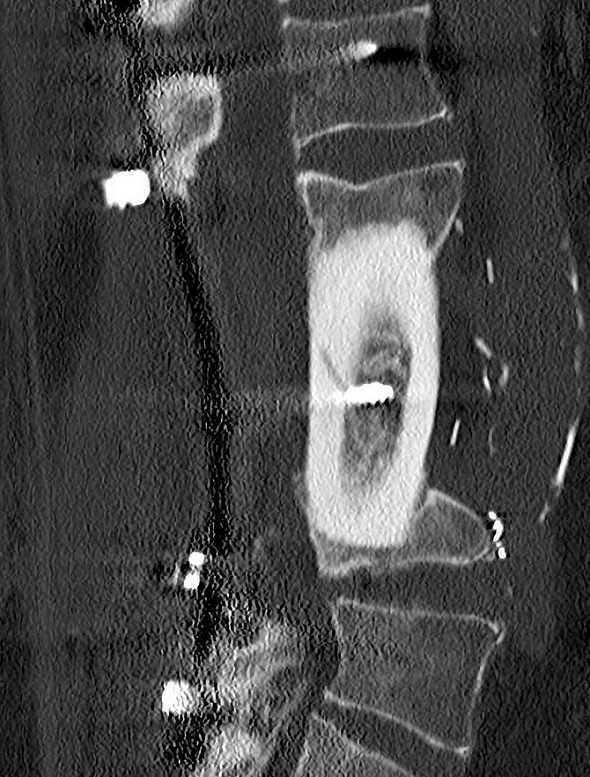In spinal surgery, the implant of homologous bone grafts is mainly applied to favour the arthrodesis, meaning the biological fusion of joint and bone fragments, which helps the stabilisation of the spine with fixation devices. The fusion can be posterior (i.e. scoliosis), postero-lateral (i.e. lumbar degenerative surgery, spondylolisthesis) or interbody.
To increase the possibility of success of bone fusion, a bone graft is overlapped, it can be both autologous or homologous. The autologous graft is taken from the removal of the vertebral laminae during the decompression of the spinal canal or the removal of the vertebral apophysis. The homologous grafts are usually made from morselized or lyophilised bone chips, morselized femoral heads of bone pastes such as Db-Grafts which add osteoinductive properties stimulating bone growth and a great inhabiting structure for mesenchymal cells. In the case of larger decompression surgery, it is also possible to apply bone shafts to protect the nerve structures by reconstructing the posterior area of the spinal canal.

In the treatment of certain neoplasms of the spine (benign and malignant), it is necessary to remove cancer mass as a whole, along with the fraction of the spine to which it was attached (block vertebrectomy), to offer a better perspective in the control of the illness. This procedure requires the reconstruction of the spinal area, with solid mechanical support, to allow the progressive recovery of the functions (walking and upright position).
Within the range of options, there are the homologous long-bone grafts (femur or tibia in the chest-lumbar tract, fibula in the cervical tract) but also vertebras from donors. These options are preferable compared to other solutions, especially for their radiolucency, fundamental for the optimisation success of radiotherapy which is often associated to complete the surgical treatment. Another fundamental advantage is the possible early detection of local recurrences during the follow-ups.

